-
 Bitcoin
Bitcoin $84,279.0862
1.17% -
 Ethereum
Ethereum $1,858.6128
0.52% -
 Tether USDt
Tether USDt $1.0000
0.02% -
 XRP
XRP $2.0833
-1.59% -
 BNB
BNB $597.4578
-2.06% -
 Solana
Solana $124.0300
-2.05% -
 USDC
USDC $1.0000
0.00% -
 Dogecoin
Dogecoin $0.1692
-0.66% -
 Cardano
Cardano $0.6673
-1.05% -
 TRON
TRON $0.2372
0.36% -
 Toncoin
Toncoin $4.0011
-3.95% -
 Chainlink
Chainlink $13.5232
-1.33% -
 UNUS SED LEO
UNUS SED LEO $9.3916
2.13% -
 Stellar
Stellar $0.2661
-0.26% -
 Avalanche
Avalanche $18.9440
-1.33% -
 Sui
Sui $2.3295
-1.51% -
 Shiba Inu
Shiba Inu $0.0...01219
-4.51% -
 Hedera
Hedera $0.1643
-0.77% -
 Polkadot
Polkadot $4.0642
-1.61% -
 Litecoin
Litecoin $81.8330
-3.27% -
 MANTRA
MANTRA $6.1386
-3.56% -
 Bitcoin Cash
Bitcoin Cash $303.3933
-1.76% -
 Bitget Token
Bitget Token $4.5769
-0.23% -
 Dai
Dai $1.0000
0.00% -
 Ethena USDe
Ethena USDe $0.9998
0.01% -
 Pi
Pi $0.6903
-4.97% -
 Hyperliquid
Hyperliquid $13.1418
-4.34% -
 Monero
Monero $217.7149
-0.27% -
 Uniswap
Uniswap $6.0563
-0.37% -
 Aptos
Aptos $5.2264
-1.90%
How to choose trading pairs for Ethereum spot trading?
Ethereum spot trading pair selection requires considering liquidity, volatility, correlation analysis, and fundamental/technical analysis to align with your risk tolerance and achieve profitable trading strategies.
Feb 28, 2025 at 07:01 am
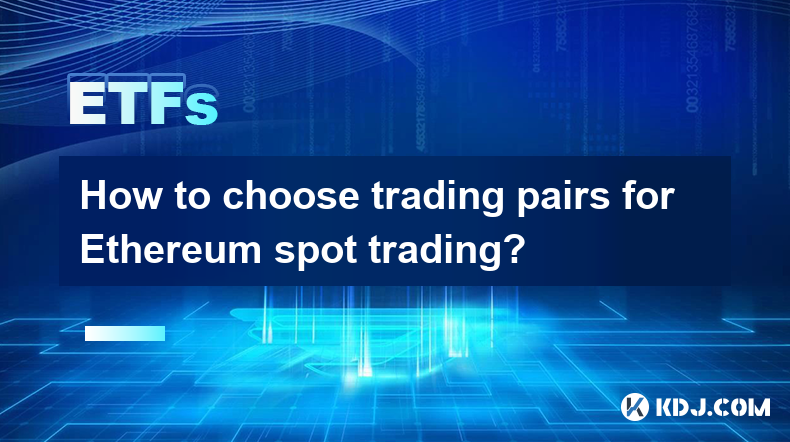
How to Choose Trading Pairs for Ethereum Spot Trading?
Key Points:
- Understanding Ethereum's Role: Ethereum's position as a leading smart contract platform significantly impacts its trading pair dynamics. Understanding its role in the DeFi ecosystem and its correlation with other cryptocurrencies is crucial for selecting profitable trading pairs.
- Market Liquidity and Volume: High trading volume and liquidity are paramount for minimizing slippage and ensuring easy entry and exit points. Low liquidity pairs can lead to significant price fluctuations during trades.
- Volatility and Risk Tolerance: Ethereum's price volatility is a key factor. Choosing pairs with varying volatility levels allows for tailored risk management strategies depending on the trader's risk appetite.
- Correlation Analysis: Examining the historical price correlation between Ethereum and other cryptocurrencies helps identify potential trading opportunities and manage risk through diversification.
- Fundamental Analysis: Assessing the underlying projects and their technological advancements can reveal long-term potential and inform trading pair selection.
- Technical Analysis: Utilizing technical indicators and chart patterns to identify entry and exit points is crucial for optimizing trading strategies within chosen pairs.
How to Choose Trading Pairs for Ethereum Spot Trading:
- 1. Understanding Ethereum's Position in the Cryptocurrency Ecosystem:
Ethereum's unique position as the leading smart contract platform significantly impacts its trading dynamics. Unlike Bitcoin, which primarily functions as a store of value, Ethereum is a foundational technology for a rapidly expanding decentralized finance (DeFi) ecosystem. This means its price is influenced not only by general cryptocurrency market sentiment but also by the performance and adoption of DeFi applications built on its network. A surge in DeFi activity often translates to increased demand for ETH, pushing its price upwards. Conversely, negative news or events impacting the DeFi space can negatively affect ETH's price.
Understanding this complex interplay is crucial for selecting profitable trading pairs. For instance, a trading pair like ETH/UNI (Ethereum/Uniswap) would be expected to exhibit a stronger positive correlation than ETH/BTC (Ethereum/Bitcoin), as Uniswap is a major DeFi application built on Ethereum. This knowledge allows traders to anticipate price movements based on the performance of the DeFi sector and adjust their trading strategies accordingly. It's essential to stay updated on the latest developments within the DeFi space, including new project launches, regulatory changes, and technological upgrades, as these events can significantly impact the price of Ethereum and its related trading pairs. Ignoring these factors could lead to significant losses, especially in the highly volatile cryptocurrency market. Furthermore, understanding the broader macroeconomic environment, including regulatory announcements and global economic trends, is equally important as these factors can indirectly impact the entire cryptocurrency market, including Ethereum and its trading pairs. Therefore, a comprehensive understanding of Ethereum's role in the broader crypto ecosystem is fundamental for effective pair selection.
- 2. Prioritizing Market Liquidity and Trading Volume:
Liquidity and trading volume are two of the most critical factors to consider when choosing Ethereum trading pairs. High liquidity ensures that there are enough buyers and sellers in the market to execute trades quickly and efficiently at the desired price. Low liquidity, on the other hand, can lead to significant price slippage, meaning the actual price you buy or sell at may differ substantially from the quoted price. This is especially problematic during periods of high volatility, when large orders can drastically move the price. Similarly, high trading volume indicates that a particular pair is actively traded, making it easier to enter and exit positions without significantly impacting the price.
To identify liquid trading pairs, traders should consult reputable cryptocurrency exchanges and analyze the 24-hour trading volume for different ETH pairs. Exchanges typically provide this data, allowing traders to compare the liquidity of various pairs. Pairs with consistently high trading volume are generally preferred, as they offer better price discovery and reduced slippage. However, it's important to note that even high-volume pairs can experience temporary liquidity crunches during periods of extreme market volatility. Therefore, traders should always monitor the order book depth before placing large orders, to ensure there is sufficient liquidity to execute the trade without significant price impact. Furthermore, selecting pairs with sufficient liquidity across multiple exchanges provides redundancy and allows for diversification of trading venues, minimizing the risk associated with relying on a single exchange. A robust liquidity analysis is thus an indispensable component of effective Ethereum spot trading pair selection.
- 3. Assessing Volatility and Aligning with Risk Tolerance:
Ethereum's price volatility is a defining characteristic of the cryptocurrency market. The price of ETH can fluctuate significantly in short periods, presenting both opportunities and risks for traders. Understanding the volatility of different trading pairs is crucial for effective risk management. Pairs with high volatility, such as ETH/ALT (Ethereum against an altcoin with a history of significant price swings), offer the potential for substantial profits, but also carry a higher risk of significant losses. Conversely, pairs with lower volatility, such as ETH/BTC (Ethereum/Bitcoin), may offer more moderate returns but with reduced risk.
Traders should carefully consider their risk tolerance when selecting trading pairs. Risk-averse traders might prefer pairs with lower volatility, while those with a higher risk appetite might choose more volatile pairs. It's essential to never invest more than one can afford to lose. Diversification across multiple trading pairs with varying volatility levels is a key risk management strategy. By spreading investments across different pairs, traders can mitigate the impact of any single pair's price movements. Regularly monitoring market conditions and adjusting trading positions based on changing volatility is also crucial. Using technical indicators such as the Bollinger Bands and Average True Range (ATR) can help assess volatility levels and identify potential entry and exit points. Furthermore, utilizing stop-loss orders can limit potential losses if the market moves against the trader's position. A well-defined risk management strategy is essential for successful Ethereum spot trading, and this starts with selecting pairs that align with the trader's risk profile.
- 4. Employing Correlation Analysis for Diversification and Risk Management:
Correlation analysis is a powerful tool for understanding the relationships between different cryptocurrencies and identifying potential trading opportunities. By examining the historical price correlation between Ethereum and other cryptocurrencies, traders can make more informed decisions about pair selection and risk management. A positive correlation indicates that two assets tend to move in the same direction, while a negative correlation suggests that they move in opposite directions. Understanding these correlations is vital for diversifying a portfolio and mitigating risk.
For instance, if a trader is already heavily invested in ETH/BTC, they might consider adding a pair with a negative or low correlation to reduce overall portfolio risk. This could involve pairing ETH with a cryptocurrency that is less correlated with Bitcoin, thereby diversifying exposure. Analyzing historical correlation data using various statistical methods, such as Pearson correlation coefficient, can provide insights into the relationships between different cryptocurrencies. However, it's important to remember that correlations can change over time due to market dynamics and technological advancements. Therefore, regular monitoring and updates of correlation analysis are essential. Furthermore, traders should consider using advanced techniques like rolling correlation to account for potential changes in correlation over different time periods. Sophisticated correlation analysis combined with a thorough understanding of market dynamics is crucial for effective risk management and informed pair selection in Ethereum spot trading.
- 5. Conducting Fundamental Analysis to Identify Long-Term Potential:
While technical analysis focuses on price charts and indicators, fundamental analysis delves into the underlying value of an asset. In the context of Ethereum spot trading pair selection, fundamental analysis involves assessing the underlying projects and their technological advancements to identify long-term potential. This requires researching the technology behind each cryptocurrency, understanding its use cases, and evaluating its team, community, and market adoption.
For instance, a trading pair involving ETH and a promising DeFi project might be attractive based on the fundamental strength of the underlying technology. Factors to consider include the project's whitepaper, development roadmap, tokenomics, team expertise, and community engagement. A strong fundamental foundation can suggest long-term value appreciation, making it a desirable trading pair for long-term investors. However, it's important to note that fundamental analysis is not always predictive of short-term price movements. The cryptocurrency market is highly influenced by sentiment and speculation, and even fundamentally sound projects can experience price volatility. Therefore, fundamental analysis should be combined with technical analysis for a comprehensive approach to trading pair selection. Furthermore, keeping abreast of industry news, regulatory developments, and technological breakthroughs is crucial for informed fundamental analysis. A diligent approach to fundamental research is a key element of a successful long-term strategy in Ethereum spot trading.
- 6. Utilizing Technical Analysis to Identify Entry and Exit Points:
Technical analysis uses price charts and indicators to identify patterns and trends in the market. This approach focuses on past price movements to predict future price movements, providing insights into potential entry and exit points for trades. In the context of Ethereum spot trading, technical analysis plays a crucial role in identifying optimal times to buy and sell.
Traders often use various indicators, such as moving averages, relative strength index (RSI), and MACD, to identify potential support and resistance levels, trend reversals, and overbought/oversold conditions. Chart patterns, such as head and shoulders, double tops/bottoms, and flags, can also provide valuable insights into potential price movements. However, it's important to note that technical analysis is not foolproof. Market conditions can change rapidly, and indicators can generate false signals. Therefore, it's essential to combine technical analysis with other forms of analysis, such as fundamental analysis and risk management strategies. Furthermore, the effectiveness of technical analysis can vary depending on the chosen timeframe and the specific trading pair. Backtesting trading strategies using historical data can help refine technical analysis techniques and identify optimal settings for indicators and parameters. Mastering technical analysis is a continuous learning process, requiring consistent practice and adaptation to changing market conditions. A comprehensive technical analysis approach is an integral part of successful Ethereum spot trading pair selection and trade execution.
FAQs:
Q: What are some of the most popular Ethereum trading pairs?
A: Popular pairs often include ETH/BTC (Ethereum/Bitcoin), ETH/USDT (Ethereum/Tether), ETH/USDC (Ethereum/USD Coin), and pairs with major altcoins like ETH/BNB (Ethereum/Binance Coin) or ETH/ADA (Ethereum/Cardano). The popularity of a pair often reflects its liquidity and trading volume. However, popularity shouldn't be the sole deciding factor; liquidity and your own risk tolerance are more important.
Q: How often should I re-evaluate my Ethereum trading pairs?
A: Market conditions are dynamic. Regular re-evaluation, ideally weekly or even daily depending on your trading style and risk tolerance, is crucial. News events, technological advancements, and shifting market sentiment can significantly alter the correlations and liquidity of trading pairs, impacting your strategy's effectiveness.
Q: What are the risks associated with Ethereum spot trading?
A: The cryptocurrency market is highly volatile. Price fluctuations can be dramatic, leading to significant losses if not properly managed. Liquidity risks, security risks related to exchange hacks or vulnerabilities, and regulatory uncertainty are all factors to consider. Thorough due diligence and risk management are essential.
Q: Are there any resources to help me learn more about technical and fundamental analysis for cryptocurrencies?
A: Many online resources are available, including educational websites, online courses, and books focusing on technical and fundamental analysis applied to cryptocurrencies. Reputable exchanges often provide educational materials as well. Remember to critically evaluate the source's credibility.
Q: How can I manage risk when trading Ethereum?
A: Employing stop-loss orders to limit potential losses, diversifying your portfolio across multiple trading pairs, and only investing capital you can afford to lose are crucial risk management techniques. Never invest more than you're willing to lose completely. Regularly review your risk exposure and adjust your positions as needed.
Q: What is the difference between spot trading and futures trading for Ethereum?
A: Spot trading involves the immediate exchange of Ethereum for another asset at the current market price. Futures trading involves agreeing to buy or sell Ethereum at a specific price on a future date. Futures trading introduces additional risk due to leverage and the uncertainty of future prices. Spot trading is generally considered less risky but offers lower potential returns.
Disclaimer:info@kdj.com
The information provided is not trading advice. kdj.com does not assume any responsibility for any investments made based on the information provided in this article. Cryptocurrencies are highly volatile and it is highly recommended that you invest with caution after thorough research!
If you believe that the content used on this website infringes your copyright, please contact us immediately (info@kdj.com) and we will delete it promptly.
- Pi Coin Price Prediction for Today (April 2)
- 2025-04-02 13:35:12
- Grayscale Files to Launch an ETF That Would Track 75% of the Digital Asset Market Excluding Meme Coins and Stablecoins
- 2025-04-02 13:35:12
- Monero (XMR) and Ondo (ONDO) Lose Strength – Here Is Why
- 2025-04-02 13:30:12
- Continuation from NFL CONSTITUTION Parts 1 & 2. (We the Miami Dolphins 🐬 Perfect Season 1972)
- 2025-04-02 13:30:12
- Pub Dog Colorado Is Featured on the New Monopoly: Colorado Springs Edition Game Board
- 2025-04-02 13:25:12
- Grayscale Files S-3 Form with the US Securities and Exchange Commission (SEC) on April 1 to Register Its Multi-Asset
- 2025-04-02 13:25:12
Related knowledge
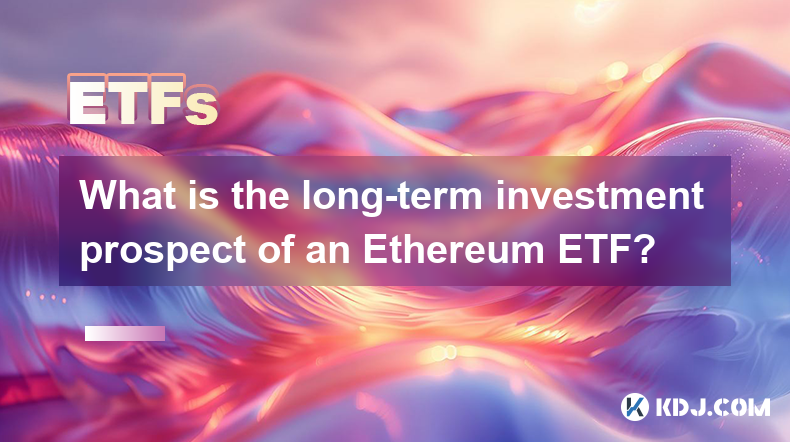
What is the long-term investment prospect of an Ethereum ETF?
Mar 18,2025 at 03:01pm
Key Points:Uncertainty surrounds the long-term prospects of an Ethereum ETF due to regulatory hurdles and market volatility.Approval hinges on regulatory clarity regarding cryptocurrencies, especially concerning investor protection and market manipulation.Successful ETF launches could boost Ethereum's price and adoption, but failure could negatively imp...

What are the channels for purchasing an Ethereum ETF?
Mar 18,2025 at 01:49am
Key Points:Currently, there are no Ethereum ETFs available for direct purchase by the general public in most major markets.Access to Ethereum exposure through ETFs is limited, mainly through futures-based ETFs.Purchasing Ethereum directly or through other investment vehicles remains a viable alternative.Regulatory hurdles and market complexities signifi...
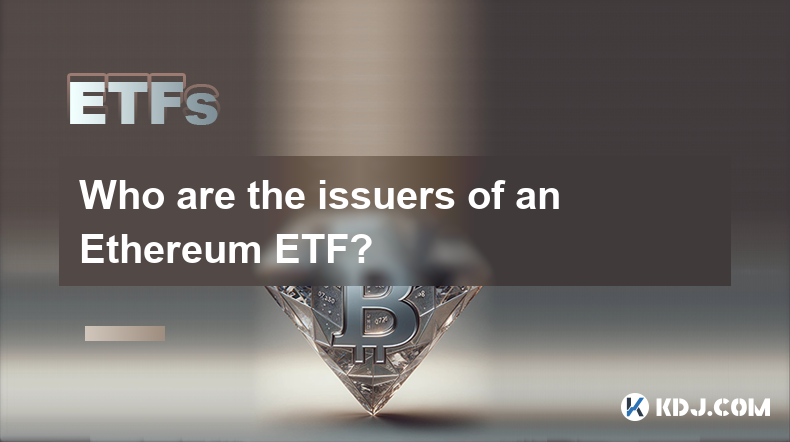
Who are the issuers of an Ethereum ETF?
Mar 19,2025 at 08:07pm
Key Points:There are no currently approved Ethereum ETFs in the US, meaning no single issuer can be definitively named. However, several firms have filed applications.The issuers of potential Ethereum ETFs will be large, established financial institutions, typically asset management companies.The specific requirements for ETF issuers are stringent and o...
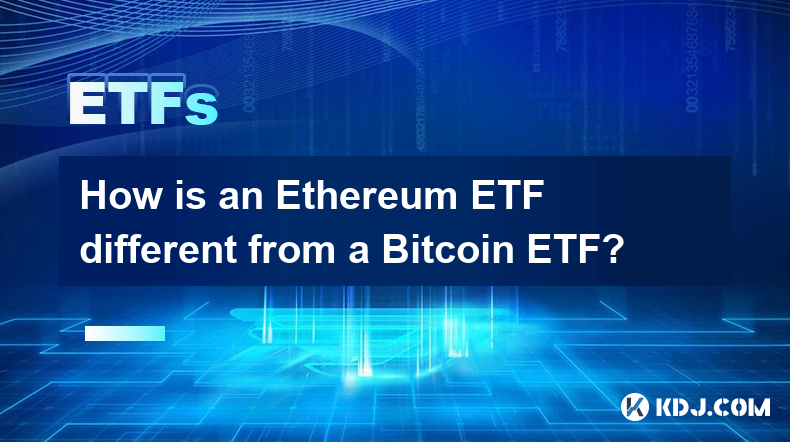
How is an Ethereum ETF different from a Bitcoin ETF?
Mar 17,2025 at 10:55am
Key Points:Underlying Asset: The core difference lies in the underlying asset: an Ethereum ETF tracks the price of Ether (ETH), while a Bitcoin ETF tracks the price of Bitcoin (BTC).Technology and Use Cases: Ethereum's blockchain supports smart contracts and decentralized applications (dApps), creating a distinct technological and investment narrative c...
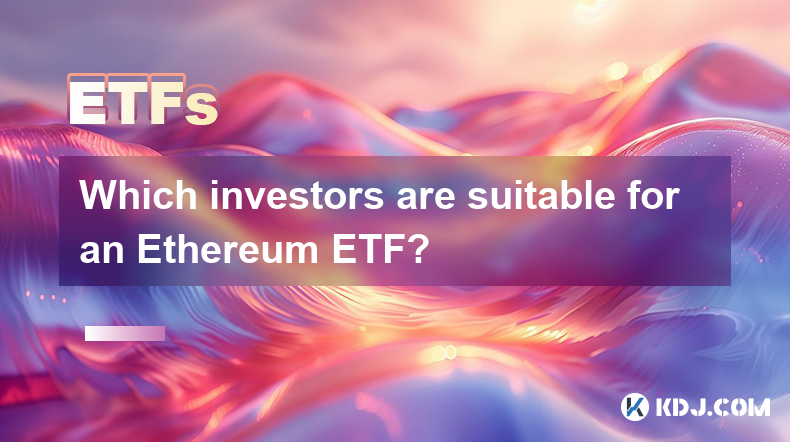
Which investors are suitable for an Ethereum ETF?
Mar 16,2025 at 05:50pm
Key Points:Risk Tolerance: Ethereum ETF investment requires a high risk tolerance due to the volatility of the cryptocurrency market.Investment Goals: Investors seeking long-term growth potential and exposure to the Ethereum ecosystem are suitable candidates.Investment Horizon: A longer-term investment horizon is crucial to weather market fluctuations.U...
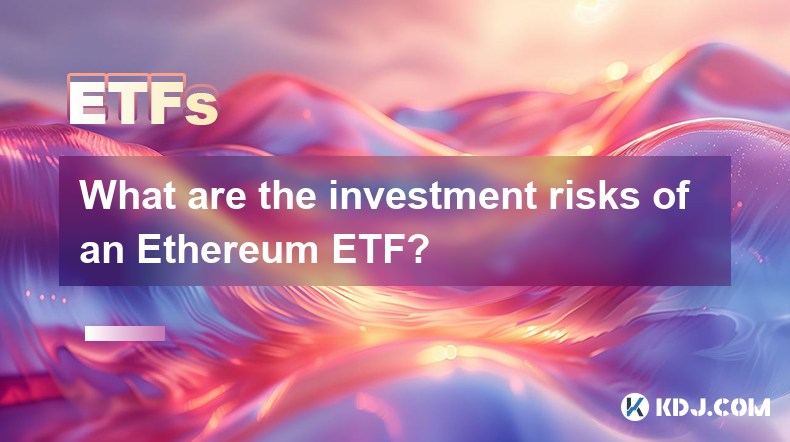
What are the investment risks of an Ethereum ETF?
Mar 18,2025 at 02:12am
Key Points:Price Volatility: Ethereum's price is highly volatile, impacting ETF share prices.Regulatory Uncertainty: Changes in regulatory landscapes can significantly affect ETF trading and performance.Market Manipulation: The potential for market manipulation, particularly in smaller ETFs, exists.Underlying Asset Risk: Risks associated with the Ethere...

What is the long-term investment prospect of an Ethereum ETF?
Mar 18,2025 at 03:01pm
Key Points:Uncertainty surrounds the long-term prospects of an Ethereum ETF due to regulatory hurdles and market volatility.Approval hinges on regulatory clarity regarding cryptocurrencies, especially concerning investor protection and market manipulation.Successful ETF launches could boost Ethereum's price and adoption, but failure could negatively imp...

What are the channels for purchasing an Ethereum ETF?
Mar 18,2025 at 01:49am
Key Points:Currently, there are no Ethereum ETFs available for direct purchase by the general public in most major markets.Access to Ethereum exposure through ETFs is limited, mainly through futures-based ETFs.Purchasing Ethereum directly or through other investment vehicles remains a viable alternative.Regulatory hurdles and market complexities signifi...

Who are the issuers of an Ethereum ETF?
Mar 19,2025 at 08:07pm
Key Points:There are no currently approved Ethereum ETFs in the US, meaning no single issuer can be definitively named. However, several firms have filed applications.The issuers of potential Ethereum ETFs will be large, established financial institutions, typically asset management companies.The specific requirements for ETF issuers are stringent and o...

How is an Ethereum ETF different from a Bitcoin ETF?
Mar 17,2025 at 10:55am
Key Points:Underlying Asset: The core difference lies in the underlying asset: an Ethereum ETF tracks the price of Ether (ETH), while a Bitcoin ETF tracks the price of Bitcoin (BTC).Technology and Use Cases: Ethereum's blockchain supports smart contracts and decentralized applications (dApps), creating a distinct technological and investment narrative c...

Which investors are suitable for an Ethereum ETF?
Mar 16,2025 at 05:50pm
Key Points:Risk Tolerance: Ethereum ETF investment requires a high risk tolerance due to the volatility of the cryptocurrency market.Investment Goals: Investors seeking long-term growth potential and exposure to the Ethereum ecosystem are suitable candidates.Investment Horizon: A longer-term investment horizon is crucial to weather market fluctuations.U...

What are the investment risks of an Ethereum ETF?
Mar 18,2025 at 02:12am
Key Points:Price Volatility: Ethereum's price is highly volatile, impacting ETF share prices.Regulatory Uncertainty: Changes in regulatory landscapes can significantly affect ETF trading and performance.Market Manipulation: The potential for market manipulation, particularly in smaller ETFs, exists.Underlying Asset Risk: Risks associated with the Ethere...
See all articles

























































































